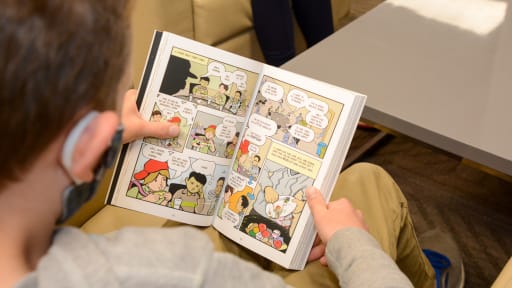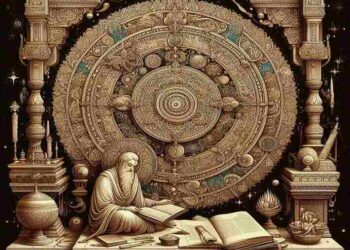Table of Contents
ToggleIntroduction
The Power Of Graphic Novels In Todays Literature Graphic novels have evolved from a specialized kind of entertainment to a popular literary genre in recent decades. Previously mostly linked to comic books, graphic novels have emerged as an important and esteemed literary form.
Graphic novels have shown themselves to be a potent medium for examining difficult subjects, societal concerns, and individual stories because of its distinctive fusion of written narrative and visual art.
From Art Spiegelman’s moving Maus to Marjane Satrapi’s ground-breaking Persepolis, graphic novels have captivated readers of all ages and transcended the borders of literature and art.
The power of graphic novels resides in their capacity to use both words and images to portray complex, emotional, and intellectual stories, producing a multisensory reading experience that is impossible to achieve with standard prose.
This type of literature uses the visual to support the written word and vice versa, speaking to readers in a whole different way. It is impossible to overestimate the impact of graphic novels on contemporary literature and popular culture given their growing legitimacy as a storytelling medium.
The Evolution of Graphic Novels
From Comic Strips to Graphic Novels: The History
The roots of graphic novels can be traced back to the earliest forms of visual storytelling, such as ancient cave paintings, Egyptian hieroglyphs, and medieval tapestries. However, the specific form of graphic storytelling that we recognize today—combining images with sequential storytelling—emerged in the early 20th century.
Comic strips and comic books began to gain popularity, particularly in the United States, with iconic characters like Superman, Batman, and Wonder Woman taking center stage. These comic books were often lighthearted, action-packed tales aimed at younger audiences.
It wasn’t until the late 1970s and 1980s that graphic novels began to emerge as a distinct literary form. Artists and writers such as Will Eisner, Art Spiegelman, and Alan Moore started experimenting with graphic storytelling, crafting works that were more sophisticated, nuanced, and serious in tone. Eisner’s A Contract with God (1978) is often considered one of the first true graphic novels, setting the stage for a wave of creative and literary experimentation that would follow.
Around the same time, Spiegelman’s Maus (1980) revolutionized the genre by using the comic format to tell the harrowing story of the Holocaust, blending history with personal narrative in a way that had never been done before.
With works like Maus and The Watchmen by Alan Moore, graphic novels started to gain credibility as serious literary works. The 1990s saw the genre grow in both diversity and popularity, with graphic novels like Persepolis by Marjane Satrapi and Fun Home by Alison Bechdel offering poignant, personal narratives and tackling heavy themes such as identity, gender, and social conflict.
Mainstream Acceptance and the Role of Graphic Novels Today
The Power Of Graphic Novels In Todays Literature Today, graphic novels are no longer viewed solely as entertainment for children or comic book fans. The genre has evolved into a diverse literary category, encompassing a broad range of topics, styles, and formats. Graphic novels are now published by major literary publishers, and many works are celebrated in mainstream literary circles.
The Power Of Graphic Novels In Todays Literature In fact, works like Maus and Persepolis have won prestigious literary awards, including the Pulitzer Prize and numerous Eisner Awards, solidifying their place in modern literature.
Graphic novels now reflect an increasingly broad spectrum of voices, representing marginalized communities, personal experiences, and cultural histories. In addition to these literary achievements, graphic novels have found a place in education. Many schools and libraries now use graphic novels as tools for engaging young readers and encouraging literacy development. The success of graphic novels in the literary world has given rise to a new generation of creators who are bringing fresh perspectives and innovative storytelling techniques to the medium.

The Power of Graphic Novels: Combining Visuals and Words
Visual Storytelling: An Intimate Experience
The Power Of Graphic Novels In Todays Literature The power of graphic novels lies in their ability to combine the strengths of both the visual and textual elements of storytelling. Unlike traditional novels, where the reader is entirely reliant on words to create mental imagery, graphic novels provide a visual framework that adds another layer to the narrative. The illustrations—whether stylized, realistic, or abstract—are integral to the story, enhancing the emotions, pacing, and atmosphere of the narrative.
In graphic novels, the reader experiences both the words and images simultaneously. This unique relationship between text and imagery allows readers to absorb the story in a more immediate way. The layout, color palette, and artistic choices made by the illustrator all work together to amplify the story’s emotional and thematic impact. For instance, in Maus, the use of animals to represent different nationalities (Jews as mice, Nazis as cats) adds a level of depth and symbolism that enhances the narrative’s exploration of trauma and survival.
The Power Of Graphic Novels In Todays Literature The visual component of graphic novels also allows readers to experience the pacing of the story in a more tactile way. A dramatic scene may be conveyed through large, expansive panels, while moments of introspection or emotional complexity are depicted through smaller, more intimate images. The combination of these visual cues with the text creates a dynamic reading experience that can provoke emotional responses more effectively than traditional prose.
The Multidimensional Nature of Storytelling
The Power Of Graphic Novels In Todays Literature Graphic novels have the ability to tell stories that span genres, from memoirs to fantasy, historical fiction to speculative fiction. They provide a unique space for authors and artists to experiment with storytelling techniques, such as playing with the panel layout, using unconventional visual metaphors, and incorporating various visual styles to convey different moods or thematic elements.
One example of this multidimensional storytelling is Persepolis by Marjane Satrapi. The book is both a memoir of Satrapi’s childhood in Iran during the Islamic Revolution and a reflection on themes of identity, rebellion, and displacement. The stark black-and-white artwork complements the seriousness of the subject matter, yet the simplicity of the visuals also lends a sense of accessibility to the story. This blend of accessibility and profundity is a hallmark of the power of graphic novels.
Another example is Sandman by Neil Gaiman, which blends elements of fantasy, horror, and mythology to tell the story of Dream, one of the Endless, and his interactions with gods, demons, and mortals. The diversity of artists who contributed to Sandman allows each story arc to have its own distinct visual style, enhancing the rich complexity of the narrative.
Complex Themes: Tackling Social Issues, History, and Identity
The Power Of Graphic Novels In Todays Literature One of the most compelling aspects of graphic novels is their ability to tackle complex and often difficult themes with both depth and nuance. Whether exploring personal identity, political resistance, or social justice, graphic novels have become a powerful medium for discussing contemporary issues. They allow authors and illustrators to tell stories that may not be easily conveyed in traditional prose.
For example, The Arrival by Shaun Tan is a wordless graphic novel that tackles the immigrant experience, illustrating the emotional and psychological challenges of displacement and the search for belonging. Through evocative imagery and surreal landscapes, Tan conveys the isolation and uncertainty that immigrants often feel in a foreign land, creating a visceral experience for readers.
Similarly, March by John Lewis, Andrew Aydin, and Nate Powell tells the story of the civil rights movement through the eyes of Congressman John Lewis. The graphic novel format allows the authors to capture the intensity and urgency of the movement while also illustrating the human cost of fighting for justice. The use of visual imagery in March makes the history of the civil rights movement more tangible and emotionally resonant.
The Educational Impact of Graphic Novels
Engaging Reluctant Readers
Graphic novels have proven to be an effective tool for engaging reluctant readers, particularly in classrooms. The combination of pictures and words makes graphic novels more accessible to students who may struggle with traditional texts or have shorter attention spans.
The visual elements help to break up the text and provide context clues that make the story easier to follow. For these reasons, graphic novels are often used in classrooms to introduce students to literature, making reading a more enjoyable and approachable experience.
The Power Of Graphic Novels In Todays Literature Graphic novels can also bridge the gap for students who are English Language Learners (ELL), as the combination of visual storytelling and written language can support comprehension and language acquisition. Additionally, because graphic novels often cover diverse cultural and social issues, they help foster empathy and understanding among readers.
Promoting Literacy and Visual Literacy
The Power Of Graphic Novels In Todays Literature Beyond traditional reading comprehension, graphic novels promote an important skill known as visual literacy—the ability to interpret and make meaning from images. In an increasingly image-driven world, visual literacy is becoming just as crucial as traditional literacy skills.
Graphic novels help readers develop the ability to read and interpret images, making them a vital tool for promoting both literacy and visual literacy in modern education.
Many educational institutions are now incorporating graphic novels into their curricula as a way to teach narrative structures, character development, and thematic analysis. Teachers have found that graphic novels are particularly effective in teaching difficult historical events, as they provide a vivid and accessible way to understand and process complex topics.
For example, Maus and Persepolis are often used in high school and college classrooms to discuss the Holocaust, war, and the trauma of displacement, providing students with a more immersive and personal understanding of history.

Conclusion
The Power Of Graphic Novels In Todays Literature Graphic novels are no longer a marginalized or niche genre but have firmly established themselves as an essential and dynamic part of contemporary literature. With their ability to combine words and visuals, graphic novels provide a multifaceted approach to storytelling that allows for a deeper emotional engagement and greater accessibility.
The Power Of Graphic Novels In Todays Literature The medium’s capacity to tackle difficult themes, address social issues, and represent diverse voices has made it a powerful tool for both personal expression and cultural critique.
As the popularity of graphic novels continues to grow, they are changing the way readers engage with literature, challenging traditional notions of what constitutes a “book” and what storytelling can be. Graphic novels have earned their place in libraries, classrooms, and bookshops around the world, and their influence on modern literature is undeniable.
Read More
FAQ
1. What is the difference between a comic book and a graphic novel?
While both comic books and graphic novels use sequential art to tell stories, graphic novels are typically longer, more complex, and often deal with mature themes. Graphic novels are usually standalone stories or long-form narratives, whereas comic books often consist of shorter, episodic stories.
2. Why are graphic novels considered a powerful form of literature?
Graphic novels are considered powerful because they combine visual art with narrative storytelling, allowing for a more immersive and dynamic reading experience. The use of illustrations enhances the emotional impact of the story, and the medium’s ability to tackle complex themes makes it an important and versatile form of literature.
3. How can graphic novels benefit students in education?
Graphic novels engage reluctant readers, promote visual literacy, and help students connect with complex themes in a more accessible way. They can also provide a bridge for English Language Learners and make it easier for students to understand historical events, social issues, and personal experiences.
4. What are some famous graphic novels?
Some well-known graphic novels include Maus by Art Spiegelman, Persepolis by Marjane Satrapi, Fun Home by Alison Bechdel, The Arrival by Shaun Tan, and Watchmen by Alan Moore. These works are celebrated for their storytelling and artistic merit.
5. How do graphic novels impact popular culture?
Graphic novels have had a significant impact on popular culture by influencing film, television, and other forms of media. Many graphic novels have been adapted into successful movies and TV shows, and the genre has inspired new generations of readers, writers, and artists to explore storytelling through visual art.
















